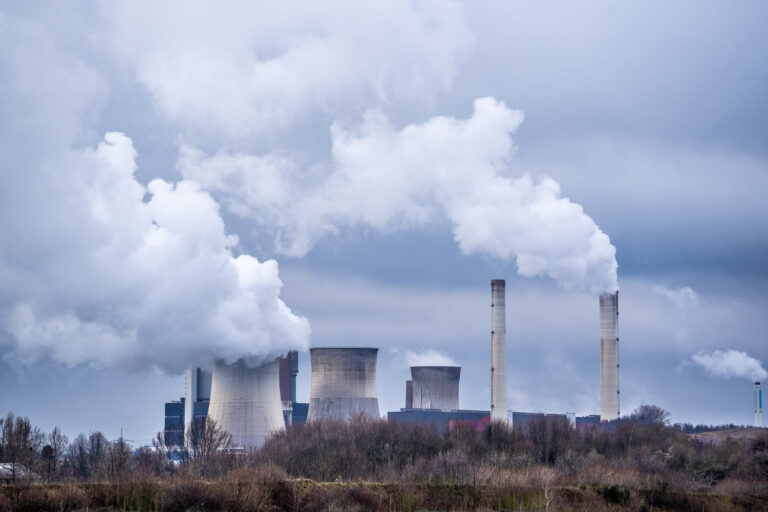The Impact of Climate Change on Natural Catastrophes and Insurers: Building Resilience through Catastrophe Risk Management

In recent years, the frequency and intensity of natural catastrophes have underscored the profound influence of climate change on our environment and economy. From devastating hurricanes and wildfires to severe floods and droughts, these events not only pose immediate threats to lives and property but also present significant challenges to insurers worldwide. Understanding the impact of climate change on natural catastrophes and the role of effective catastrophe risk management is crucial in mitigating these risks and ensuring long-term resilience.
Climate Change and Natural Catastrophes
Climate change exacerbates the severity and frequency of natural catastrophes in several ways:
- Increased Intensity of Extreme Weather Events: Rising global temperatures lead to more intense hurricanes, typhoons, and cyclones, fueled by warmer ocean waters. These storms bring stronger winds, heavier rainfall, and higher storm surges, amplifying the potential for catastrophic damage.
- Changing Precipitation Patterns: Climate change alters precipitation patterns, leading to more frequent and severe floods in some regions and prolonged droughts in others. These conditions can devastate agricultural areas, increase wildfire risks, and strain water resources.
- Rising Sea Levels: Melting ice caps and glaciers contribute to rising sea levels, heightening the risk of coastal flooding and erosion. Low-lying coastal regions and island nations are particularly vulnerable to inundation and damage to infrastructure.
- Wildfire Risk: Warmer temperatures and drier conditions create favorable environments for wildfires, which can spread rapidly and threaten communities, ecosystems, and property.
The impact of natural catastrophes on insurers is multifaceted and far-reaching:
Financial Losses: Insurers face substantial payouts for property damage, business interruption, and liability claims resulting from natural disasters. Catastrophic events strain insurance reserves and can lead to financial instability if not properly managed.
Reinsurance Market Dynamics: Insurers often rely on reinsurance to mitigate their exposure to catastrophic risks. However, increased frequency and severity of natural catastrophes can lead to higher reinsurance premiums and reduced capacity, impacting profitability.
Regulatory and Market Pressures: Regulatory requirements may evolve in response to heightened catastrophe risks, imposing stricter capital adequacy standards or mandating disclosure of climate-related risks. Insurers also face pressure from investors, policyholders, and stakeholders to adopt sustainable practices and resilience strategies.
Operational Challenges: Catastrophic events disrupt normal business operations, affecting claims processing, customer service, and workforce management. Insurers must maintain operational resilience to ensure continuity during and after disasters.
Building a Strong Catastrophe Risk Management Practice
Given the escalating risks posed by climate change-induced natural catastrophes, building a robust catastrophe risk management practice is imperative for insurers:
Risk Assessment and Modeling: Utilize advanced catastrophe modeling tools to assess exposure, quantify risks, and evaluate potential losses from natural disasters. Incorporate climate change scenarios to anticipate future risks and inform underwriting decisions.
- Underwriting Discipline: Implement stringent underwriting standards that account for geographic risk factors, building resilience criteria, and climate resilience measures. Offer incentives for policyholders who adopt mitigation measures to reduce risks.
- Portfolio Diversification: Diversify insurance portfolios to spread risk across different regions and perils. Balance exposure to high-risk areas with reinsurance and alternative risk transfer mechanisms to enhance financial resilience.
- Partnerships and Collaboration: Collaborate with governments, academic institutions, and industry peers to share data, insights, and best practices for managing catastrophic risks. Engage in public-private partnerships to develop resilience initiatives and infrastructure improvements.
- Sustainability and Resilience Initiatives: Integrate sustainability principles into business practices by promoting green building standards, supporting renewable energy projects, and advocating for climate adaptation and mitigation strategies.
Conclusion
As climate change continues to drive the frequency and severity of natural catastrophes, insurers face unprecedented challenges in managing catastrophic risks. By prioritizing catastrophe risk management, insurers can enhance their resilience, protect their financial stability, and fulfill their role in supporting communities and economies affected by disasters. Building a strong catastrophe risk management practice isn’t just a strategic imperative—it’s a moral obligation to safeguard lives, property, and the environment against the escalating impacts of climate change.